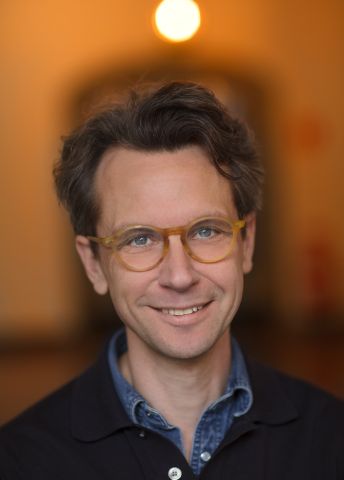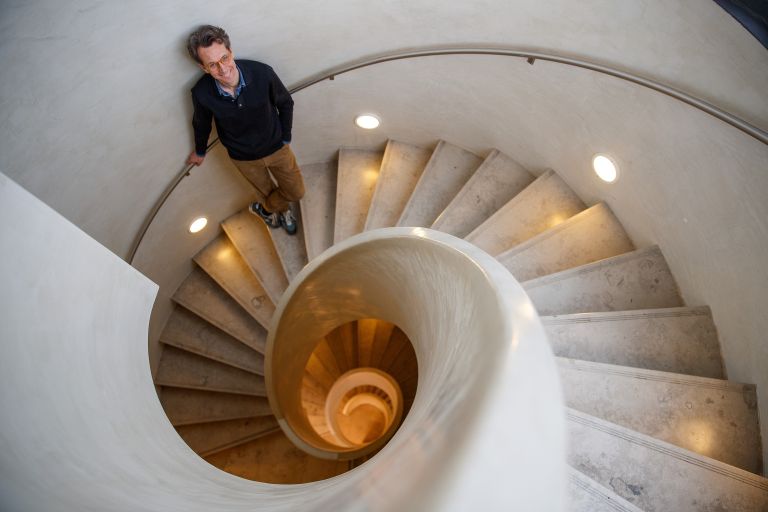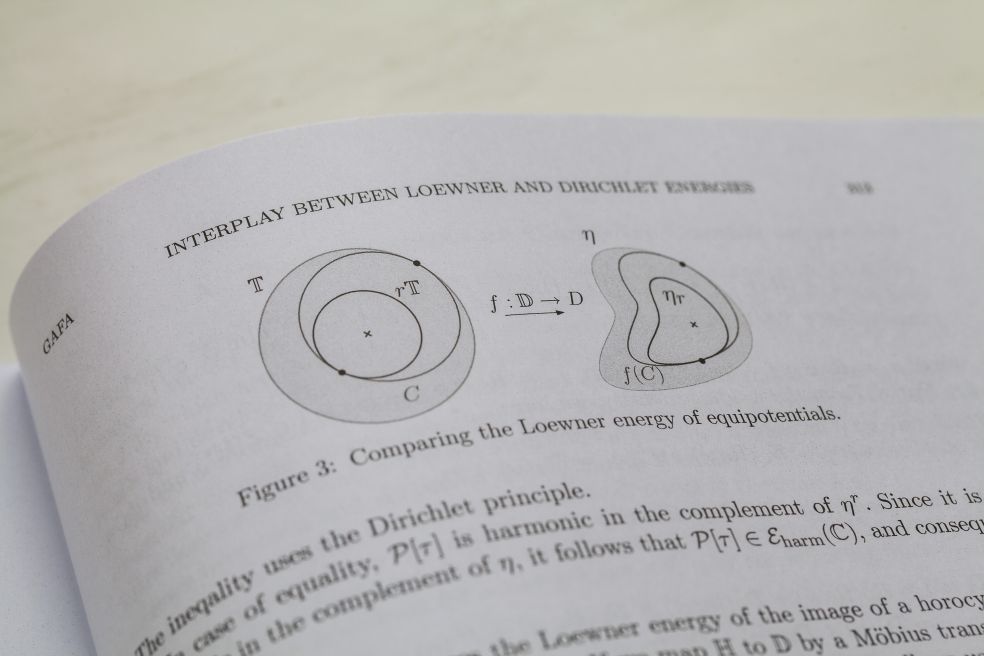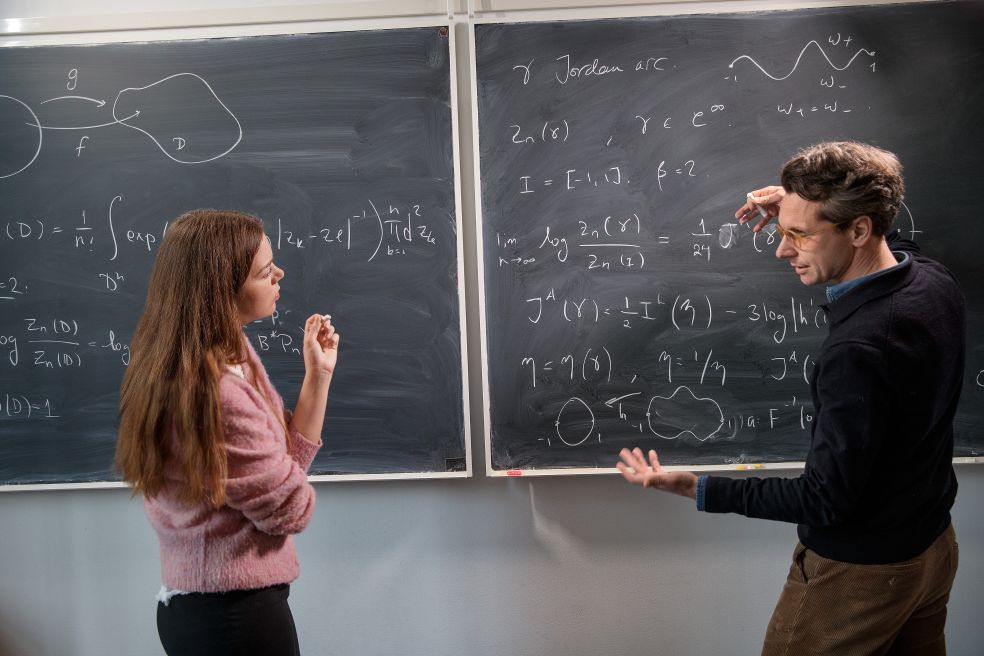
Fredrik Viklund
Professor of Mathematics
Wallenberg Scholar
Institution:
KTH Royal Institute of Technology
Research field:
Mathematics, specializing in random conformal geometry


Wallenberg Scholar
Institution:
KTH Royal Institute of Technology
Research field:
Mathematics, specializing in random conformal geometry
Viklund is a professor of mathematics at KTH Royal Institute of Technology and a Wallenberg Scholar. When he talks about his research, he often mentions one word: interplay. Many of the most interesting discoveries occur at the intersection between mathematics and physics.
“We can formulate the laws of physics using mathematics in a surprisingly effective way,” he says.
And no advanced equipment is needed – much of his research just requires a pen and paper.
Viklund works in a field called random conformal geometry – a branch of mathematics that emerged in the early 2000s. It describes random geometric structures, first discovered in physical models of porous materials or magnetism, for instance.
It turns out that seemingly completely different phenomena in nature share the same type of random, yet predictable, geometry.
“These objects are very irregular. But they also have symmetries that we can exploit. This opens up new ways to understand both mathematics and physics,” says Viklund.
The lines in such objects are not straight like a ruler, but consist of irregular curves reminiscent of a coastline in close-up. But there are also hidden symmetries that researchers can use. When the objects are enlarged, rotated and elongated, they can behave in an orderly manner. Finding and using these symmetries is a central aim of the research.

A key element of Viklund’s research is to build bridges between different branches of mathematics. One example is known as the Loewner energy. This can be described as a measure of how much a closed curve deviates from being a perfect circle. The more the curve is stretched, pinched, or frayed, the higher the energy.
The Loewner energy can be interpreted using probability theory and also by more classical analysis, thereby connecting two worlds previously considered quite disparate.
“It’s exciting when you find unexpected links between areas that don’t actually have anything to do with each other. New tools are created and there are new questions to explore,” says Viklund.
Mathematics fascinates me. It’s very powerful and gives us tools to think and talk about concepts that would otherwise be incomprehensible, such as infinity.
Another part of his work concerns quantum field theories. These are mathematical models used to describe elementary particles and their interactions, for example in the Standard Model. An important example is Yang–Mills theories.
There are many exciting and challenging problems here that mathematicians have not yet properly explored. It may eventually be possible to develop better “maps” of the very smallest building blocks in nature.
“It’s a growing field, and it’s likely that new methods can drive the research forward,” says Viklund.
The support of Knut and Alice Wallenberg Foundation has been crucial to Wiklund. As a Wallenberg Academy Fellow and later a Wallenberg Scholar, he has been given the time and resources to conduct long-term research.
“I’ve been able to focus on more difficult problems and dared to take greater risks. And I’ve also had the opportunity to recruit doctoral students and postdocs to build a strong research environment. The support has also enabled me to collaborate more with other young researchers outside my own field,” he says.
Viklund emphasizes that the Scholar network and regular meetings between researchers in different fields have been invaluable.
“Sweden doesn’t really have a natural meeting place for leading researchers across disciplinary boundaries. This program has created exactly that, and it has meant a great deal to me,” he says.

Many people find mathematical research to be quite abstract, and it is not always possible for the researcher to explain how their research will be used.
“I’m conducting basic research. Major breakthroughs can’t be predicted – if they could, they would already have been achieved. But without basic research, we would never have the tools that form the basis for applied research. That’s why long-term funding is so important.”
The history of science shows that when mathematicians find new connections between different fields, it often results in unexpected tools that later become important within as well as outside mathematics.
There are also close links with physics. Better mathematical models can provide a deeper understanding of the quantum world, which ultimately impacts everything from materials science to technology.
For Viklund, much of the satisfaction also lies in the joy of discovery that research provides and in seeing new collaborations grow.
“Swedish mathematical research has blossomed in recent years. We now have an environment that is as strong as anywhere in the world, and it’s incredibly stimulating to be part of that development.”
Text Nils Johan Tjärnlund
Translation Maxwell Arding
Photo Magnus Bergström